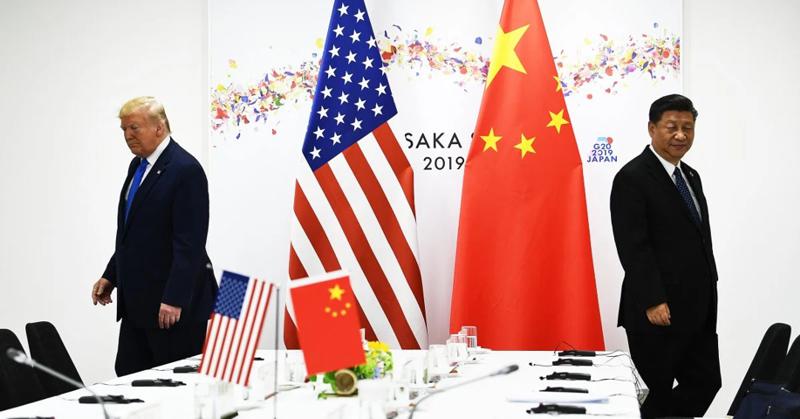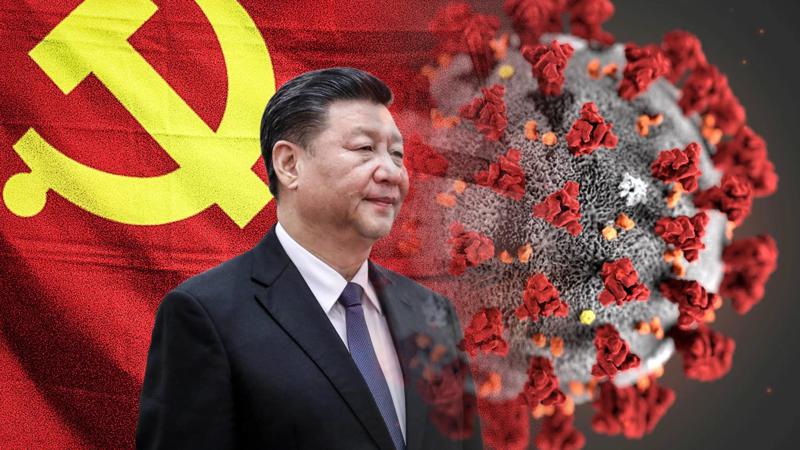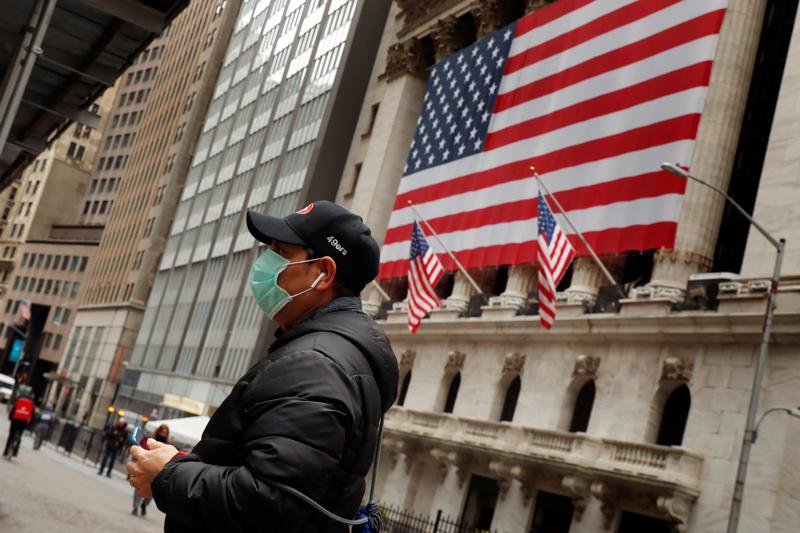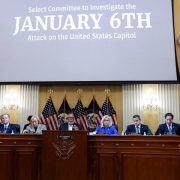This is written based on an essay of mine published in Italian in the Italian journal of geopolitics Limes. I thank you Lucio Caracciolo for the conversation that helped with this essay.
The Covid-19 (coronavirus) pandemic is really a consequence, not a cause, of the new giant geopolitical confrontation between USA ad China. Had there been mutual trust, good bilateral relations between them, Beijing might have been less defensive about the early outbreak of the disease, the USA would have been clearer about the entity of the drama in Wuhan and thus the global damage of the deadly flu might have been better contained.
A similar pattern was followed during the 2003 SARS outburst. In a few months the epidemic was controlled in China and worldwide and the global economy restarted gingerly on a V-shape trajectory. Presently the disease is under no control, the ongoing recession might well be the worst in the history of capitalism and the USA-China clash is spinning out of control.
The real sickness is the geopolitical situation then, not the flu. The issues that cause the USA-China row should be brought under control, to restart all over. But it is not happening, and conversely signs tell us that things could get much worse. The pandemic could ravage the world for months and perhaps years and this could exacerbate even further all existing tensions.
Real economy in standstill
Meanwhile on March 20 there was an oil Armageddon. For the first time ever the price of the former “black gold” became negative. The short-term reason was that producers had to get rid of excessive stocks. The long-term reason is that global economy sees no perspective of recovery. Besides the trillions dumped by the US administration actually to keep afloat the stock market, the real economy is coming to a standstill and there is no clear indication of when it could restart without the threat of contagion. The IMF (the International Monetary Fund) doubts the virus could stay with us for two-three years and the economy will go through a painful process of many successive stop and go that could more disruptive than a war.
In the USA tens of thousands are dying and tens of millions are losing their jobs and their homes possibly. Millions of small and big companies could shut down for good. For the USA, it is the biggest economic, social and political crisis created by external forces, a virus coming from abroad, since the war of independence. It is larger than the 1929 depression or the 9/11 terrorist attack. The 1861-1865 US Civil War was an entirely internal crisis; World War 2 was external, massive, but actually it solved the domestic economic depression. This time is different in nature but could bring unprecedented damage. And looking from US eyes it’s all China’s fault. Could the virus in America be the Pearl Harbor of the next conflict?
Even, as some hope, the virus will disappear in a few months out of natural causes, the damage will be lasting. It is the first epidemic of USA history and after that America needs to consider to build a brand-new health care system, that proved awfully unfit for the emergency. All kinds of infrastructures were also dreadfully inadequate – undergrounds, trains, airports, telecommunication, Artificial Intelligence et cetera. In all of these areas China and Asian countries fared better, which helped them with fighting the virus. Moreover, especially at the beginning the US failed to show the global leadership that was needed and this contributed to the ensuing confusion in coping with the disease. The US will be forced to some deep rethinking and soul searching. And this happens in the middle of a massive bilateral tussle with China.
Where did it start?
The origins of these tensions have a long history,[1] but at least for the disease we have to start, as usual, from the beginning, which in this case was in China. The epidemic broke out due to the collision between two geopolitical, social, and economic Chinas: backward and still poor rural areas against the modern, wealthy cities.[2] The two structurally intertwined Chinas cannot do without each other, but precisely for this reason, they produce recurrent epidemics. For example, the avian flu in the early 2000s, SARS in 2003, and the uncontrollable spread of swine fever from 2018 until today are all the result of contagion from viruses transmitted from rural to urban areas and back.
Containing the negative health consequences of the relationship between metropolitan and agricultural areas, with hundreds of millions of internal migrant workers moving from one to the other, is a matter that has so far been neglected but that has become more urgent today.
This is because the negative effects of today’s coronavirus have a huge internal and international impact, evidently. The ongoing pandemic shows that the issue affects not only the Chinese but the whole world.
It is a problem typical of China, and China needs to deal with the endemic conditions that have created crises. There is an urgent need for a drastic reform strategy. The way in which China has so far resolved the contradiction between health protection and economic growth—demonstrating to the surprise of many that life comes first, then GDP—could give hope that the leadership itself realized the need for change.
But it is not guaranteed at all that a season of structural reforms will arise from this awareness. The tendency of the regime to close ranks for the sake of trying to preserve the status quo or an internal clash between opposing factions could interrupt a possibly more sensible and far-sighted path.
In any case, it is very early to determine the outcome of the current crisis. We can so far try to interpret its dynamics, and outline some hypotheses on its results. We divide this analysis into three parts. First of all, let us remember how China presented itself on the eve of the pandemic. Then we will study how China is dealing with it. Finally, we scrutinize the near future. In all three decisive phases, on the external front but also in domestic disputes, the relationship with the United States is extremely important.
If the strategic objective of the People’s Republic is the return to greatness after the “century of humiliation,” this might imply, for some Chinese pundits, not only economic development and military strengthening, but also cultural hegemony. This in simple terms would mean the end of American-led Western prevalence, to be replaced with a sinocentric vision. It would therefore be necessary for China also to overcome the simple idea of Deng Xiaoping that “the economy is the hard truth” (“jingji shi yin daoli“). It may be useful to understand that in geopolitics money can serve to take power, but power matters more than money and power makes money. But presently global power, of the kind some Chinese may be after, is extremely complicated and certainly not based on mere strength, be it military or economic.[3]
Or it is necessary to modify, if not radically change, the strategic ambitions of the country, and accept the initial idea of the period of reforms at the end of the Qing empire a century ago: it is not a question of imposing a Chinese hegemony on the world but of integrating China into today’s world, thereby accepting its existing rules. After all, China chose the Western ideology of communism, abandoning the “imperial-Confucian” tradition, wanting to be Western like the others—except that walking along many paths has opened up different perspectives, including the coronavirus.
China on the eve of the virus
Over the past decade, perhaps misled by the mere interest in economic matters cultivated by the rapidly expanding Chinese bourgeoisie and by American, European, and Asian predictions of the inevitable rise of Beijing as a new hegemon, much of the Chinese ruling class convinced itself that it was already in a position to move to Number One. The gap between reality and ambition has dangerously widened. China and the world did not understand each other and continue to not understand each other.
Worse, in 2018-19, the formidable economic growth on which Beijing based its geopolitical ambition slowed sharply. This happened while the crisis of relations with the United States was becoming acute. With serious delay, in June 2018 the Chinese leadership finally caught the signal of the American offensive, started nine years earlier by US President Barack Obama with his “pivot to Asia,” and developed by the administration of President Donald Trump in different ways but in the same vein. The United States gradually over the past decade developed a strong feeling it is essentially tired of China and intends to prevent its reveries of supremacy and greatness from turning into bullying others and crashing the existing order.
China in this mistook many signals. The same US declinist rhetoric, so often on display in US media, is not tantamount to an American willingness to surrender, but a domestic solicitation to act before it is too late, directed at all the power factors of the American empire. In this way, the United States wants to give China the alternatives of opening the economic system and initiating a change in political system, or locking itself in and risking collapse. The American goal, evident at least from Obama onward, is to prevent China not only from overtaking America but also from trying to assert hegemony.
The economic-commercial interdependence between the People’s Republic and the United States has been structured since the signing of the agreement for Beijing’s entry into the World Trade Organization (WTO) in 1999 and effective since 2001. The agreement implied there would have been the full opening of the Chinese market, and therefore the convertibility of the yuan/renminbi, within twenty years.
This would have exposed China’s opaque, rigid, and closed political and institutional system to possible unsustainable financial shocks. In short, full financial, economic, and commercial integration into the American-led global system, based on US rules and a centuries-old Western tradition that has informed the world, implies that the Chinese government has to become more flexible to sustain the possible political shock of an economic crisis. But this in turn entails what Beijing does not want so far: radical change and the risk of being overwhelmed.
For the first decade following Beijing’s entry into the WTO, the US did not press Beijing for extreme measures: the complete opening of China to the world. At first, this was because the failures of the “war on terror” in Afghanistan and Iraq—also in fact financed by Beijing with its purchases of US bonds—gave some of America’s rivals all over the world the feeling of being at recess. Simply, the US was too concentrated on that endeavor to deal with other things. Then the economic crisis that erupted in 2008 was interpreted by Beijing as the sign of the end of capitalism and therefore of American power.
When the American counter-offensive took off at the end of the last decade, at first cautiously—giants turn slowly—then explicitly, the leaders of Beijing, perhaps drunk with hubris, did not notice it. Obama’s initial goal was to shift the strategic focus to Asia, and to a lesser extent to Europe. This effort went up to conceiving and promoting two macro-regional trade organizations, with clear geopolitical motives—effectively supplanting the WTO that they could no longer control.
The one for Europe (TTIP) was intended primarily to keep Germany under control, and the other was for the Asia-Pacific (TPP). The latter did not initially include China, but did not rule out its inclusion in principle, provided China really opened up to the world and submitted to global rules. These rules are not a more recent whim of the White House, but the latest evolution of parameters on how to deal with trade and economic relations that have informed the whole world in substance since the discovery of the American continent.
When Trump, just settled in the White House, liquidated the TPP with a stroke of the pen, Beijing rejoiced. It did not realize that the new administration, interpreting the now bipartisan anti-Chinese consensus, did not intend to give up at all—if anything, they wanted to intensify the offensive, just changing the method. They went from the alliance-blocking method to the bilateral one. Thus the US was tightening ties with Japan, Australia, South Korea, Vietnam, India, and other Asian actors, against whom it enjoys a clear advantage in terms of power, on a bilateral basis, without cumbersome trappings of multilateral treaties. The objective is to tighten the circle around China without having to take on the management of an expensive and inefficient alliance (see NATO).
The war over import-export duties, however small, and the first hints of decoupling, or of American limitation of interdependence with China, added to the Chinese tensions with Japan, America’s vanguard in the region, and the increasingly acute territorial disputes in the South China Sea, where Chinese and American ships collided several times. All of this drastically cooled Sino-American relations.
This creates a rather dangerous predicament, given the poor mutual ability to interpret the other’s intentions. Over the past year, disputes over Beijing’s brutal treatment of the Uyghur minority in Xinjiang and, since May 2019, the still untamed mass protests in Hong Kong have sounded the red alert in Zhongnanhai, the heart of the Chinese government. The Hong Kong rebellion not only de facto overwhelmed the local government, controlled by Beijing, but also triggered the crushing reconfirmation in Taiwan of the anti-Beijing, independence-leaning President Tsai Ing-wen (Cai Yingwen), initially disadvantaged in the polls.
Inside, together with the sharp drop in growth, induced for too many years by state investment in infrastructure, a bad signal had been added at the end of 2018 about the health security of the country. A rather virulent swine fever forced the culling of about half of the pigs, with a relative increase in the price of pork, a primary component of the Chinese diet, and consequent effects on the food chain.
Economic growth decreased to around 6% or perhaps lower; inflation reached 4.8% or perhaps higher. On the eve of the outbreak in Wuhan, the threat of the combination of inflation and stagnation began to materialize: the deadly stagflation.
China and the virus
Four out of ten Chinese still live in the countryside and in remote villages, incomparably more backward than the glittering metropolises of the coast. But it is that 40% that guarantees the food supply of the remaining 60%, who are mostly middle class, with a share of the upper-middle class and super-rich members of the government. Urban classes live in modern apartments, but eat food produced without too much care for hygiene.
In other countries, there is a parallel evolution between city and countryside. They are modernized together, or the wealthy cities have no substantial relationship with the lower classes, and there is a detachment that is impossible in China because of the birth and growth of a huge middle class that holds rich and poor together, modern cities and the backward countryside.
More than 200 million Chinese live as internal migrants, a “floating population” according to the official parlance, constantly moving from one place to another in search of work and opportunities, and come into contact with the middle class, which in turn is in contact with the super-rich.
For example, if a construction company needs a bricklayer, it recruits in the countryside because it is more convenient. After a few months, having completed the work, he can be sent back, where he has an assigned small plot of land to be cultivated, which cannot be alienated, in order to allow him to live, but normally in a poorer and less sanitary environment. There he waits for the next urban job. So many of those migrants live in the countryside but spend most of their time in the city. Food production takes place in the unhealthy countryside.
But de facto, the small land plots are an unemployment benefit, the place where the city mason returns when he loses his job and finds something to do and eat. Here he can’t become a potential revolutionary, thus subversive, part of the urban unemployed proletariat.
Here, however, no animal husbandry with modern attention is possible: there are no pig or cow farms, no crowds of animals kept in perfect hygienic conditions. The migrant worker, part of the floating population, owns one or two pigs or cows and they are raised in the corner pigsty. Their meat or milk is collected by brokers and then stored by ever larger distributors without any substantial control over the raw materials.
If they are modernized, ownership of the land must be concentrated, and then millions will be permanently expelled from rural areas. But these expelled people would become a dangerous, potentially revolutionary homeless urban sub-proletariat roaming the country, organizing into groups of bandits or criminal societies, like the peasants that centuries ago challenged and at times toppled the ruling dynasties. Certainly, now modern electronic surveillance would make their success more difficult compared to centuries ago, when large swathes of the country were out of direct imperial control. But the social instability could be an unavoidable cost.
To stabilize them, a social security system would be needed to provide assistance in the event of unemployment. But for this it would take more money, more taxes, and therefore a change in the “social contract” that has tied the entrepreneurs and the middle class to the government so far.
Today this coming and going is a source of social mobility, and at the same time backwards agriculture can act as a vector of deadly diseases. It is not surprising that this management of the food chain has produced a long series of scandals such as poisoned rice, toxic water peddled as purified, or melamine-contaminated milk. That’s why China has been the epicenter of two pandemics in seventeen years, SARS in 2003 and the Covid-19 coronavirus today.
To eradicate this permanent threat, it would be necessary to organize the resettlement of hundreds of millions of individuals in the cities and to grant efficient welfare services and social safety nets to everyone. Huge investments would be needed, for which the Chinese should finally pay taxes. This is not the case today because after Tiananmen an unwritten but effective social contract was established between the government and young people in revolt: you stop meddling in politics, which is our job, and in return you pay little or nothing to the taxman.
Making the Chinese pay taxes would mean breaking the social pact on which the coexistence of nearly a billion and a half people for 30 years has been based. Today, taxes essentially come from state-owned enterprises (SOEs). President Xi Jinping promised to push forward a partial, relative privatization of those SOEs. But he was rejected with losses by their rich and powerful great state bureaucrats. In the end, however, the same political balance is at stake: if citizens pay taxes, together with services they would sooner or later want representation, power, and the end of the current system.
When the epidemic broke out in Wuhan in the winter of 2019, it was initially underestimated—or hidden. This also has to do with the very nature of the disease which, as seen even when it landed in the West, was hard to assess for its gravity and thus was not addressed with the attention it deserved.
On the other hand, there is the fact that Party officials have no interest in bringing the truth back to the center, and they don’t always know what Beijing wants and means—all the more so if the matter is big. The opacity of the system to the outside world is also the result of internal opacity. Officials don’t know what Xi wants. Although they are constantly second guessing him, they don’t report the truth, for fear that this may be unpleasant to his ears. Yet, as a partial result, not even Xi Jinping completely knows how things really are.
It therefore took more than a month for the government to intervene with an iron fist. On January 23, a very strict quarantine was imposed in Wuhan, in the province of Hubei, and, in a slightly less restrictive way, in the whole of China. The figures that have circulated since then about the spread of the epidemic and its contrast are approximate, not necessarily accurate. We do not know for sure how many are really infected, nor how many are dead with or because of the Covid-19. Still, at the announcement of the quarantine, according to official statements, about five million people had left Wuhan (an 11 million–person megacity, plus perhaps another 6 million residents in the countryside but housed in urban spaces) to celebrate the Chinese New Year. The disease then spread galloping across the country. In the countryside, a precise census of the sick and the victims is perhaps impossible.
Xi Jinping’s reaction is as late as it is lasting. And he got to bring at least this first epidemic phase under control. Although less narrow, forms of social distancing continue to be applied in the country, with a more or less draconian style depending on the areas and circumstances, the overall situation is improving. But the economy has been almost stagnant for two months and only from mid-March has it begun to restart, thanks to the organizational skills and discipline of the Chinese people in emergencies. It is estimated that for the first three months the Chinese economy may have contracted by 10%. Other production methods have been implemented or stimulated, especially in smart working. Industries have been converted to outfit hospitals, and new production facilities for medical supplies have even been built in a few days. In the meantime, however, the economy has been turned upside down and it is not known if, how, or when it will ever return to full speed.
Between late January and mid-March, as the virus spread around the world, Beijing built the narrative of the victorious people’s battle against the coronavirus. The propaganda narrative, although we do not forget the delayed response and poor information, rests on solid ground: the effective and rather speedy containment of the disease. This allowed Beijing to act as a model for containing a pandemic that caught the rest of the planet, starting with the Westerners (Europeans and Americans), grossly unprepared.
A first lesson to be drawn is that current information in the United States and Europe about China tends to be inaccurate. In February, the main newspapers and the most widespread Western media were talking about a “Chinese Chernobyl,” as if the coronavirus was the death knell of the Chinese system. In March, they placed the identical negative mark on their countries, then hit by the crisis, and perhaps they showed little understanding of the subject of their analysis.
Especially in America, a hostile discourse hypnotized by a red scare circulates around China—as if it is some kind of USSR 2.0.
In Asia, on the other hand, especially among the neighbors who know who the Chinese are, in late January, they quickly got ready to contain the infection as soon as it started in their territory. In this they concretely showed to their populations and to Chinese people the greater efficiency of their systems. The very first cases were isolated, a harsh quarantine was imposed, and the phenomenon was quickly contained.
They understood the danger of the event, which conversely Europe was cavalier about. In some Asian countries containment was achieved thanks to the spread of the most advanced telecommunication technologies, which allowed monitoring movements and contacts, testing, remote therapies, and control of the population’s habits via mobile phone. Neighboring countries and territories could also “read” Beijing’s numbers and words. The reaction of Taiwan, South Korea, and Singapore is exemplary of this intelligent consciousness of Chinese reality.
China has therefore moved rapidly from damage containment—still ongoing, because the emergency is certainly not over—to a propaganda counteroffensive. Some particularly shrill Beijing’s voices, which wanted to flip the responsibility for the pandemic to the United States, have been gradually hushed up by official and unofficial communications. They now seem disinclined to indulge in the blame game and paint the People’s Republic as an example for the whole world, including Americans, in the management of the coronavirus.
Along with words, there are many facts. China immediately offered, while the internal emergency was still acute, to distribute aid—part in the form of gifts partly as sales—to dozens of countries. Among the former, some in Italy immediately lent themselves to beat the drum of the Chinese propaganda machine. But several “allies” of the United States, feeling neglected by Washington, also accepted the aid. In fact, thanks to the rapid industrial conversion, the Chinese health industry met internal demand and devoted a significant share of production to the outside world. This is evidence of Beijing’s resilience and flexibility.
China does not forget it is dependent on the external market for almost 50% of its economy. Economic needs and opportunities for propaganda—that is, for the spread of Chinese soft power—here join hands. Beijing does not want to break with Washington because it knows it needs it. And it has examined the US powerful counteroffensive over this year and a half. Instead, Chinese leaders intend to make this crisis an opportunity to reverse the attacks suffered with the “Chinese Chernobyl” affair and relaunch their campaign to expand China’s influence in the world.
Meanwhile, the controversy shows no sign of diminishing. On March 25, US Secretary of State Mike Pompeo went beyond the question of the origin of the virus, and accused China of still hiding facts and data useful to other countries in addressing the epidemic: “This is an ongoing global crisis, and we need to make sure that every country today is being transparent, sharing what’s really going on, so that the global community, the global health care, infectious disease community can begin to work on this in a holistic way.”
The question seems to concern, for example, the actual number of infections and the mortality of the epidemic in China, data that could help the international community to become aware of and prepare for the true danger of the disease. That is, China is accused of having hidden data and facts, which in the end would have made sense if the disease had stopped only within the country.
Now that it has spread all over the world, everything is different, except that the point is extremely delicate for China. If China admits to having “massaged” the data for internal use, the setting of its internal propaganda should change its tone.
Indeed, China has denied hiding information. The issue is so urgent that on April 15 Trump announced he would stop financing the WHO (World Health Organization), accused of being complicit with China in covering up data. The point is that the WHO’s abetting China’s reporting on fatalities gravely misled Western countries in preparing for the necessary countermeasures. The allegations and US actions are extremely important because they indicate a possible rethinking of American participation in international organizations born out of the end of World War II. This could have far broader implications. China implicitly admitted there was something wrong in its reporting, revising by 30% on April 17 the number of fatalities.
And then?
The future is not as unpredictable as it might seem. The possible ways out of the crisis are clear, but require us to choose early. Of course, if China and the world were to face a new massive epidemic wave next winter without any cure or vaccine, any projection would have to be reviewed. In any case it is easy to see that some underlying trends, existing before the crisis, will be accentuated. Others will emerge—and indeed they are already visible.
The first and most relevant is about the growing decoupling between China and the US, inevitable because both economies will suffer a strong contraction this year. Even before Covid-19, important American production in China was moving elsewhere. This speeds up a political concern which was very strong before the pandemic, and now the pandemic makes it almost inevitable.
The dependence of the Chinese economy on the world market will affect its own model. Until now it was a system largely closed, without free capital exchanges, and hampered by a myriad of known and hidden rules and regulations. It was de facto governed by a commercial surplus, which was already in sharp decline on the eve of the coronavirus, piling up in large foreign exchange reserves, and on the robust savings of the population, necessary in the absence of a welfare worthy of the name.
Foreign exchange reserves are falling, the banking system is suffering significantly. The value of real estate is falling, while perhaps 70% of middle class savings are concentrated in property. The middle class, possibly has already started tapping their savings to cope with the difficult times.
The sum of these factors means that in a few months the Chinese bourgeoisie could feel quite impoverished. Of course, the Chinese central bank can theoretically print as much money as it wants, as its money is not fully convertible. But a gap between a nominal value and the real value of the currency could start emerging in a black market. This in turn could grow quite big, possibly igniting inflation.
Or China could try to devalue the RMB, giving Chinese exports a new advantage, but this would open up tough clashes between China and the other exporting countries that would be weakened and put out of business, as happened after the 2008 financial crisis. Exporting companies borrow at high interest rates, which keep banks afloat although they have low returns on state-sponsored projects. But if exports collapse, companies can’t pay back their loans, and banks and the state will have to tap reserves and private savings. This could cause the whole system to stall.
In all of this, internal and international clashes could be inevitable in the absence of a radical change of political direction.
For the first time in forty years, the Chinese middle classes, which used to getting richer by the year, could face belt-tightening because inflation, devaluation, or a general contraction of Chinese and global economy could impoverish them.
This trend could trigger first a social crisis, that could spin into protests or perhaps riots, and then a political fissure as this could ignite internal political clashes. It could even end up with President Xi Jinping taking out his enemies, or being bumped off by them. This won’t happen immediately, though. The pandemic emergency requires an internal truce, during which everyone could prepare for a showdown.
Presently, the postponement of the annual session of the National People’s Congress (NPC), originally scheduled for March 5 and rescheduled for April 26-29, might confirm that political games remain open. We shall see what will emerge from this meeting, extremely crucial for Chinese politics. Much will depend on the evolution of the geopolitical scenario, starting with the relationship with the United States and the situation in the Asia-Pacific region.
Here former National security Advisor McMaster blasted China arguing that: “The party’s leaders believe they have a narrow window of strategic opportunity to strengthen their rule and revise the international order in their favor—before China’s economy sours, before the population grows old, before other countries realize that the party is pursuing national rejuvenation at their expense, and before unanticipated events such as the coronavirus pandemic expose the vulnerabilities the party created in the race to surpass the United States and realize the China dream. The party has no intention of playing by the rules associated with international law, trade, or commerce. China’s overall strategy relies on co-option and coercion at home and abroad, as well as on concealing the nature of China’s true intentions. What makes this strategy potent and dangerous is the integrated nature of the party’s efforts across government, industry, academia, and the military. And, on balance, the Chinese Communist Party’s goals run counter to American ideals and American interests.”.[4]
The perception has been later confirmed by the arrest in Hong Kong of 15 moderate leaders of the democratic movement. The arrest was bitterly condemned by the US Secretary of State Mike Pompeo who accused China of betraying the judicial independence of the territory. The accusation could bring about stronger actions against Beijing.
This seems to be the prevailing mood in America. Vis a vis this two opposing forces will face each other in China. There will be those who want to close even more, toward a North Korean model and challenging the United States and regional rivals in the name of the regime’s salvation. And there will be those who aim to reform not only the economic system but also, albeit gradually, the political one.
In the background, there is the challenge of Taiwan, today in an apparently unstoppable drift from Beijing. Taiwan could probably play a crucial role, we do not know when, in the match between China and the United States for their position in the world.
If this competition gets out of hand it could lead to war. This perspective is no longer so unlikely.
When with its April 17 issue The Economist asks whether China is winning, the prestigious weekly poses the point: the virus is actually perceived as a weapon of war.
In fact, the ongoing Second Cold War between the US and China was already under way before the epidemic accelerated it. In a war, therefore, there are winners and losers. In the US, some thought winning this war would be easy, but now it is clear that China reacted and is counterpunching. It boasts of managing to control the epidemic while Europe and America are in a state of great confusion.
Then is America defeated? It is certainly an American defeat. But we may want to remember that wars are long.
In December 1941, the Japanese appeared to have knocked out America in Pearl Harbor, but less than a year later the US reversed the situation in the battle of the Midway. Furthermore, there is also another example to think about. In October 1950, American and South Korean forces had reconquered almost all of the Korean peninsula, but in December the Chinese intervened and in a couple of months the US lost what it had gained and resisted at the 38th parallel, ending the conflict with an armistice. Hence two questions: 1) where we are today in history: at Pearl Harbor or at the 38th parallel? 2) is there any way to radically change the now prevailing war logic? Perhaps the Holy See could be of help in this.
[1] See SettimanaNews.
[2] See SettimanaNews.
[3] See also my Another China, chapter 8: The Industrialization of Culture.
[4] The Atlantic.








